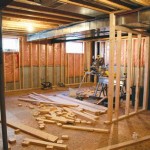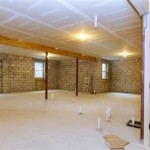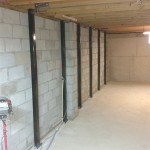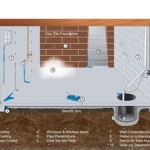How Much Does it Cost to Add a Toilet in the Basement?
Adding a bathroom to a basement can significantly increase a home's value and functionality. However, homeowners often wonder about the associated costs. This article explores the various factors influencing the overall expense of adding a basement toilet.
Key Factors Affecting Cost
Several factors contribute to the cost of adding a toilet in the basement, including plumbing, electrical work, framing, finishing and permits. Understanding these elements is crucial for accurate budgeting.
Plumbing Considerations
Plumbing work often represents a significant portion of the total cost. Connecting to existing plumbing lines can be less expensive than installing new ones. The distance from existing drain lines and the need for a sewage ejector pump can drastically impact the plumbing expenses.
If the basement is below the main sewer line, a sewage ejector system will be necessary. This system grinds waste and pumps it upwards to the main sewer line. The installation of an ejector pump adds to both the material and labor costs.
Electrical Work
Electrical work is generally required for lighting, ventilation, and potentially the sewage ejector pump. The extent of the wiring needed depends on the existing electrical setup in the basement and the planned features of the bathroom. Adding outlets for conveniences like a hair dryer or electric razor should also be considered.
Framing and Finishing
Creating a dedicated space for the toilet necessitates framing walls. The choice of materials, like moisture-resistant drywall for basements, influences the cost. Finishing touches, such as tiling, flooring, and painting, further contribute to the overall expense.
The size of the bathroom will also influence the cost of materials. A smaller half-bath will naturally require fewer materials, while a larger full bathroom with a shower will increase material costs.
Permits and Inspections
Obtaining the necessary permits and scheduling inspections are essential for legal compliance. Permit fees vary depending on the location and project scope. It's important to factor these costs into the budget.
Cost Breakdown by Element
Providing a detailed breakdown of expected costs for each element can assist homeowners in creating a realistic budget.
Rough Plumbing
Rough plumbing, which includes installing pipes and connecting to the main sewer or installing a sewage ejector pump, generally ranges from $800 to $2,500. This cost is heavily influenced by the complexity of the installation and the accessibility of existing plumbing.
Finishing Plumbing
Finishing plumbing, which involves installing the toilet and connecting water lines, can cost between $500 and $1,500. The type of toilet chosen and any additional fixtures, like a sink, will influence this price.
Electrical
The electrical work, including wiring, outlets, and lighting fixtures, typically ranges from $500 to $1,500. Adding features like ventilation fans will increase the electrical costs.
Framing and Drywall
Framing the bathroom and installing moisture-resistant drywall typically costs between $500 and $2,000, varying depending on the bathroom’s size and the chosen materials.
Finishing
Finishing touches, such as tiling, flooring, painting, and installing a vanity, can range from $1,000 to $5,000. The chosen materials significantly impact this cost, as higher-end finishes can be considerably more expensive.
Permits
Permit costs typically range from $200 to $500, depending on the local regulations and the project’s complexity.
Total Estimated Cost
Based on these estimates, adding a toilet to a basement can range from approximately $3,500 to $13,000. It is crucial to remember that these are estimates and can vary significantly based on location, materials, and labor costs. Getting multiple quotes from reputable contractors is recommended to obtain the most accurate assessment for a specific project.
Additional Considerations
Besides the core components mentioned, a few additional factors can influence the total cost. These include potential unforeseen issues during construction, such as the need for mold remediation or asbestos abatement, which could add substantial expense.
Choosing a Contractor
Selecting a qualified and experienced contractor is crucial for a successful project. Obtain multiple bids, check references, and ensure the contractor is licensed and insured. A reputable contractor can provide a detailed estimate that outlines all expected costs, helping homeowners budget appropriately.
Careful planning and budgeting are essential for adding a basement toilet. Considering the various factors outlined in this article will allow homeowners to make informed decisions and achieve a successful bathroom addition within their budget.

Cost To Add A Basement Bathroom Bright Green Door

How Much Does It Cost To Add A Bathroom In The Basement

Cost To Add A Basement Bathroom Bright Green Door

Cost To Add A Basement Bathroom Bright Green Door
How Much Does It Cost To Add A Toilet In Basement We Have Our Washing Machine The So There Is Access Water If That Matters Quora

How Much Does It Cost To Add A Bathroom 2024 Data

Adding A Bathroom To Basement Pros Cons Costs

Cost To Add A Basement Bathroom Bright Green Door
How Much Does It Cost To Install A Bathroom In The Basement Quora

Basement Bathroom Cost These 5 Items Will Determine Your







